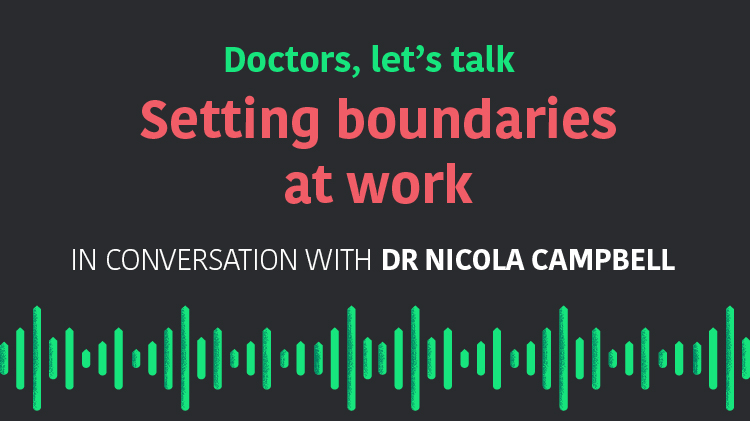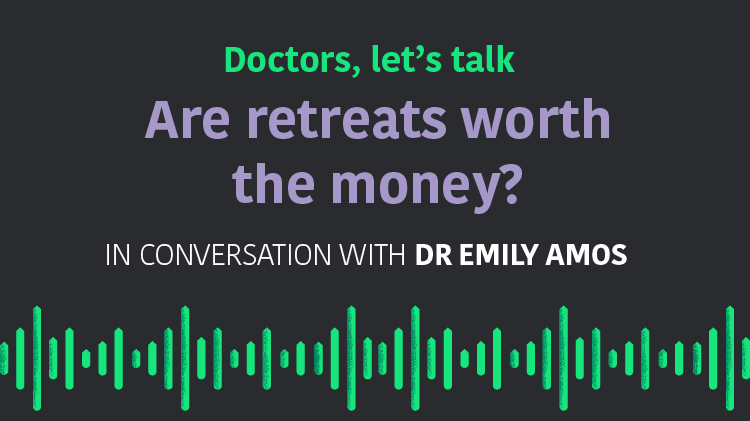Violence in the workplace
10 Jul 2023

Case study
You’ve been treating Mr Smith, a 38-year-old man who reports ongoing back pain following an injury at work the previous year. You’re running over time, and reception staff send a message advising you that Mr Smith is becoming increasingly agitated in the waiting room.
Without warning, he storms into your consulting room and stands over you, berating you for keeping him waiting. He demands a prescription for Panadeine Forte, “with plenty of repeats because I don’t want to see you again anytime soon!”.
You attempt to remain calm, but he proceeds to kick over a chair and starts yelling loudly. You reach underneath the desk to press the duress alarm button just as he hauls you out of your chair and presses you up against the wall, threatening to kill you. Other staff members rush into your office to restrain the patient while a receptionist calls the police.
The doctor as a victim
Becoming the victim of an assault can be frightening and traumatic. Everyone should have the right to feel safe in their workplace, but Australian studies have shown that almost three-quarters of surveyed doctors have been faced with aggression at some point during their careers.1
These episodes can have a lasting impact leading to reduced hours, lower job satisfaction, and an intention to leave the profession.2,3 Patient violence can appear in a wide spectrum of behaviours and actions including verbal aggression, sexual harassment, intimidation, property damage, assault, stalking or online trolling.4
Healthcare workers often have a high tolerance for, or even normalise, unacceptable behaviour. When we encounter patients unable to behave appropriately, we often don’t want to punish them or worsen their situation. Staff may need to be reassured that sometimes police involvement is necessary, and there are good reasons to report these incidents to police.
However, choosing to pursue criminal charges against a patient (the police can elect to prosecute based solely on the evidence) can be a difficult decision with ramifications that may stretch over months, or even years. Health professionals train in a culture of caregiving, so the idea of prosecuting patients can be uncomfortable and accompanied by a great deal of guilt – or concerns that the conduct arose out of a failure of clinical care.
The aftermath
The initial stage of what may be a life-altering event can affect each person in different and unforeseen ways. It may take some time for the full extent of the physical and emotional impact to set in, so it’s important to get support as early as possible. You may require time to identify what outcome you desire, and why. This is a very personal decision. Seek help, either through your own GP (ideally separate to the practice), or other supports such as employment assistance programmes or doctors’ health advisory services.
The criminal process
Pursuing a criminal prosecution will likely result in you making a statement, and potentially giving evidence in court. Giving evidence may be re-traumatising, particularly under cross-examination. It can take some time for a matter to progress to court, and you may be disappointed by the outcome.
Confidentiality obligations
Seeking medico-legal advice prior to making a police statement is essential. You still have professional and legal obligations of confidentiality to maintain. While there may be exceptions under privacy legislation which allow limited disclosure of patient information, these need to be carefully considered. The focus of any verbal or written statement should be on the inappropriate conduct and behaviour you experienced, rather than revealing information about the assailant – such as past medical history or the reason for presentation.
Discontinuing patient care
Depending on the severity of events and ongoing risk posed by the patient, a decision will likely need to be made about whether care is ended at either an individual doctor or a practice level. Where the behaviour is less serious, it may be appropriate to give the patient a formal warning or place the patient on an acceptable behaviour agreement. You may need to consider a restraining order, if threats are ongoing.
Follow-up
Debriefing with the practice team is critical after any violent or threatening event. This ensures everyone is given the opportunity to discuss the event and identify any triggers or possible future safeguards. Abuse of healthcare workers is one of many factors contributing to burnout.5 Tackling the problem through violence prevention is key, meaning clinicians don’t have to endure these kinds of assaults or face tough decisions over whether to press criminal charges against their patients.
Warning signs of escalating aggression:
- veiled and overt threats
- violent gestures such as swearing or slamming objects
- intense staring or avoiding eye contact
- irritability, restlessness or inability to sit still
- refusal to communicate
- past history of violence.
References
- Forrest L, Parker R, Hegarty K, et al. Patient initiated aggression and violence in Australian general practice. Aust Fam Physician 2010; 39(5): 323–326. 8. Tolhurst H, Baker L, Murray G, et al. Rural.
- Hills D, Joyce CM. Workplace aggression in clinical medical practice: associations with job satisfaction, life satisfaction and self-rated health. Med J Aust 2014; 201(9): 535–540. doi: 10.5694/mja13.00152.
- Hills DJ. Associations between Australian clinical medical practitioner exposure to workplace aggression and workforce participation intentions. Aust Health Rev 2016; 40(1): 36–42. doi: 10.1071/AH14246.
- RACGP. Preventing and managing patient aggression and violence – a brief guide for general practice: racgp.org.au/patientaggression
- Rosalind Kaplan, MD. Is being a victim a part of being a doctor? KevinMD.com. 29 June 2022.
Stay updated with the latest medico-legal content |
Subscribe to MDA National’s biannual Member publication, Defence Update, for the latest medico-legal updates, articles and case studies.

Doctors, Let's Talk: Setting Boundaries At Work
A conversation with Nicola Campbell, Psychiatry Registrar, that explores the necessity of setting professional boundaries as a Junior Doctor.
07 Dec 2022

Doctors, Let's Talk: Your Support Network Is Your Net-Worth
A conversation with Nidhi Krishnan, Paediatric Registrar, that explores the value of building a strong network as a Junior Doctor.
07 Dec 2022

Doctors, Let's Talk: Are Retreats Worth The Money?
A conversation with Dr Emily Amos, General Practitioner, International Board Certified Lactation Consultant, and registered mindfulness teacher, that explores the utility of mindful retreats and self-care among Junior Doctors.
07 Dec 2022

Doctors, Let's Talk: Is Quitting Medicine Ever The Answer?
A conversation with Dr Ashe Coxon, General Practitioner, career counsellor, and founder of Medical Career Planning, that explores the issue of dealing with career uncertainty as a Junior Doctor.
07 Dec 2022

